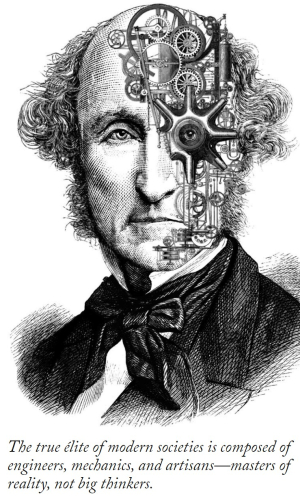Adam Gopnik in The New Yorker:
 Of all the prejudices of pundits, presentism is the strongest. It is the assumption that what is happening now is going to keep on happening, without anything happening to stop it. If the West has broken down the Berlin Wall and McDonald’s opens in St. Petersburg, then history is over and Thomas Friedman is content. If, by a margin so small that in a voice vote you would have no idea who won, Brexit happens; or if, by a trick of an antique electoral system designed to give country people more power than city people, a Donald Trump is elected, then pluralist constitutional democracy is finished. The liberal millennium was upon us as the year 2000 dawned; fifteen years later, the autocratic apocalypse is at hand. Thomas Friedman is concerned.
Of all the prejudices of pundits, presentism is the strongest. It is the assumption that what is happening now is going to keep on happening, without anything happening to stop it. If the West has broken down the Berlin Wall and McDonald’s opens in St. Petersburg, then history is over and Thomas Friedman is content. If, by a margin so small that in a voice vote you would have no idea who won, Brexit happens; or if, by a trick of an antique electoral system designed to give country people more power than city people, a Donald Trump is elected, then pluralist constitutional democracy is finished. The liberal millennium was upon us as the year 2000 dawned; fifteen years later, the autocratic apocalypse is at hand. Thomas Friedman is concerned.
You would think that people who think for a living would pause and reflect that whatever is happening usually does stop happening, and something else happens in its place; a baby who is crying now will stop crying sooner or later. Exhaustion, or a change of mood, or a passing sound, or a bright light, something, always happens next. But for the parents the wait can feel the same as forever, and for many pundits, too, now is the only time worth knowing, for now is when the baby is crying and now is when they’re selling your books.
And so the death-of-liberalism tomes and eulogies are having their day, with the publishers who bet on apocalypse rubbing their hands with pleasure and the ones who gambled on more of the same weeping like, well, babies. Pankaj Mishra, in “Age of Anger” (Farrar, Straus & Giroux), focusses on the failures of what is sometimes called “neoliberalism”—i.e., free-market fundamentalism—and, more broadly, on the failure of liberal élites around the world to address the perpetual problem of identity, the truth that men and women want to be members of a clan or country with values and continuities that stretch beyond merely material opportunity. Joel Mokyr’s “A Culture of Growth” (Princeton) is an attempt to answer the big question: Why did science and technology (and, with them, colonial power) spread west to east in the modern age, instead of another way around? His book, though drier than the more passionate polemics, nimbly suggests that the postmodern present is powered by the same engines as the early-modern past. In “Homo Deus” (HarperCollins), Yuval Noah Harari offers an elegy for the end of the liberal millennium, which he sees as giving way to post-humanism: the coming of artificial intelligence that may leave us contented and helpless, like the Eloi in H. G. Wells’s “Time Machine.” Certainly, the anti-liberals, or, in Harari’s case, post-humanists, have much the better of the rhetorical energy and polemical brio. They slash and score. The case against the anti-liberals can be put only slowly and with empirical caution. The tortoise is not merely a slow runner but an ugly one. Still, he did win the race.
More here.
Just to give some idea of what killing the NEA will (or more aptly, will not) accomplish, the $146 million budget of the National Endowment for the Arts represents just 0.012% (about one one-hundredth of one percent) of our federal discretionary spending. According to 2012 NEA figures, the annual budget for the arts per capita (in dollars) in Germany was $19.81; in England, $13.54; in Australia, $8.16; in Canada, $5.19, and in the United States just $0.47. Yes, 47 cents annually per capita. For all the arts combined. And the new POTUS feels that’s too much.
